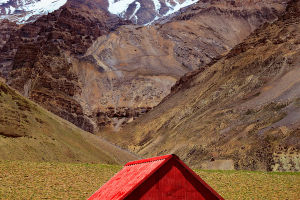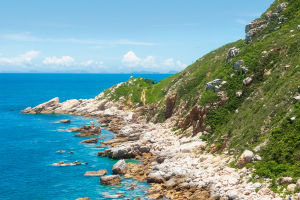Tree Strategies
In order for people to cope with the cold winter, warm measures must be taken.
Therefore, many people start buying winter clothes before the winter season begins, otherwise they may be left shivering in the cold wind. However, many people may observe a curious phenomenon in nature during winter: trees seem to be unaffected by the cold. Is this true?
According to studies, half of the ingredients in trees are composed of water. Although they adjust their component structure before the winter season begins, as long as the winter temperature drops below freezing, many cold-resistant plants may still experience plant cell death due to freezing.
However, unlike humans, trees cannot move. Once their seeds have rooted, they are destined to remain in one place for their entire lives. So how do trees survive the below-freezing temperatures during winter?
Dormancy
During autumn to winter, the amount of sunshine gradually decreases, and the climate becomes colder. Trees will produce a type of acid during this period.
This substance can be transported into the buds, thereby inhibiting their growth and causing them to enter a dormant state. During dormancy, the tree's breathing and nutrient consumption is minimized, allowing them to conserve its energy and greatly improve its cold resistance.
Structural Adaptations
The leaves of some trees have thick outer walls and a developed stratum corneum. The epidermis contains many thick-walled cells and pores. These structures can reduce water steaming and enhance the cold resistance of trees.
Growth Cessation
Many deciduous trees and shrubs stop growing during autumn and enter a dormant state. During this period, cells are isolated and their metabolic activities are reduced, enabling them to tolerate lower temperatures.
Sugar Genes
The increase in small molecules and soluble substances is one of the plant cold resistance reactions. It is generally believed that cold-resistant plants will accumulate more soluble sugar. These soluble sugars have a certain protective effect on preventing protein degeneration after dehydration.
Mutual Assistance
Some studies have shown that when temperatures are too low, trees will help each other by forming a mutual protection mechanism. For example, some trees will transfer water to other trees to help them resist the cold.
Bark Protection
The bark is the outermost protective layer of the tree and has a great effect on resisting the cold. Some bark is very strong, which can prevent cold air from penetrating into the trees.
At the same time, the tissue under the bark can store a large amount of water and nutrients, providing the necessary energy and nutrients for trees in cold winters.
Trees have adopted a series of survival strategies during winter to help them resist the impact of the cold and extreme weather. These strategies involve the structure, physiology, and genes of trees, allowing them to maintain their health and survival in winter.
Therefore, we can learn from trees and adopt similar strategies to cope with the cold winter, such as conserving energy, regulating our body temperature, and wearing warm clothing.


